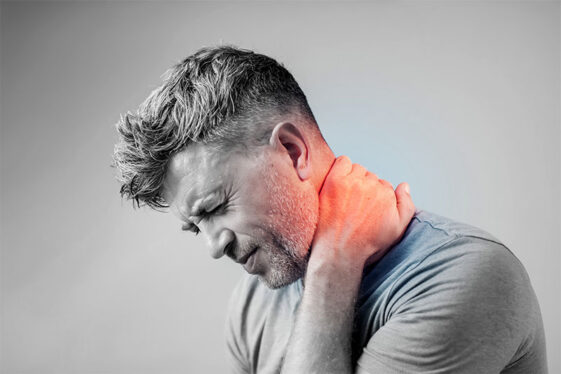

Anatomy, head and neck, sternocleidomastoid muscle. You can learn more about how we ensure our content is accurate and current by reading our editorial policy. We link primary sources - including studies, scientific references, and statistics - within each article and also list them in the resources section at the bottom of our articles. Medical News Today has strict sourcing guidelines and draws only from peer-reviewed studies, academic research institutions, and medical journals and associations. Keep the repetitions steady to avoid straining the neck further. Chin tucks: Sit upright on a chair and slowly draw the chin inward while keeping the head straight.Repeat this movement several times, only turning the head as far as is comfortable. Cervical rotation: Sit upright on a chair and slowly rotate the head to face one side and then the other.Repeat this movement in a controlled manner. Cervical side flexion: Sit upright on a chair and slowly tilt the head to one side and then the other.Repeat this movement several times, but keep it steady to avoid additional strain. Cervical flexion: Sit upright on a chair and slowly tilt the head forward and then back again.The following exercises may help with neck pain:

Some exercises may make the injury worse, especially if a person does not use the correct technique. It is important to talk to a doctor or physical therapist before exercising. Gentle stretches and exercises can help restore strength to the neck and reduce stiffness. Chiropractic care: Chiropractic care is among the alternative treatments that may help reduce pain for some people.Surgery: If other treatments fail, a person may need surgery, especially if the sternocleidomastoid ruptures or tears.It can also help prevent chronic injuries. Physical therapy: Physical therapy can help a person regain strength in the neck and head.Some people find that alternating heat and ice is helpful. Pain management: Rest, ice, heat, and nonsteroidal anti-inflammatory drugs may help reduce pain.Lifestyle changes: When bad posture or carrying heavy objects causes sternocleidomastoid pain, addressing this issue can prevent the pain from getting worse.Various treatments are available for sternocleidomastoid pain, with the type and cause of the injury determining the best option. Most people with myofascial pain experience symptoms following an injury or due to chronic lifestyle issues, such as bad posture. A person may feel pain radiating to other areas when they press on these trigger points. Myofascial pain syndrome: Myofascial pain syndrome is a type of muscle pain that causes trigger points in a muscle.It may also cause a person to change their posture or move their head in a way that increases the risk of injury. Arthritis: Arthritis in the spine can cause referred pain in the sternocleidomastoid.A 2014 case report details a ruptured sternocleidomastoid following an epileptic seizure. A person does not have to fall or experience a serious injury to sustain damage to this part of the body, however. Trauma: A fall, blow to the side of the neck, or car accident may injure the neck muscles, causing strains, sprains, and other injuries.Less frequently, some other factors may cause sternocleidomastoid pain. sleeping in an awkward position or on an uncomfortable pillow.holding a phone between the ear and shoulder.tension or injury in other muscles of the shoulders, neck, or back.




 0 kommentar(er)
0 kommentar(er)
